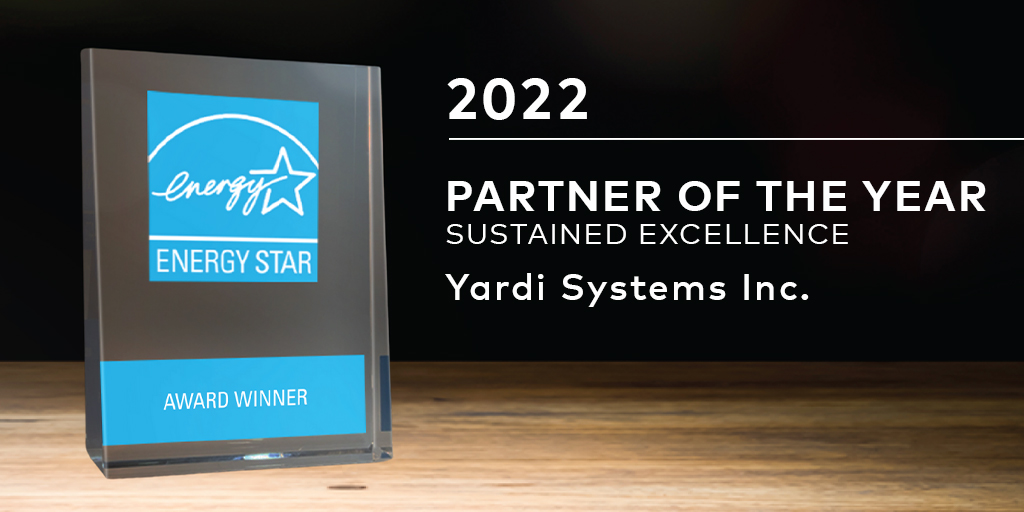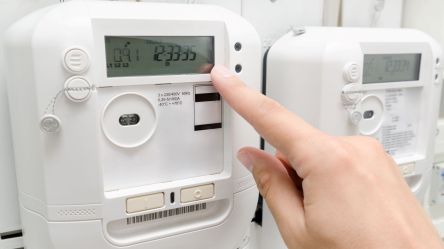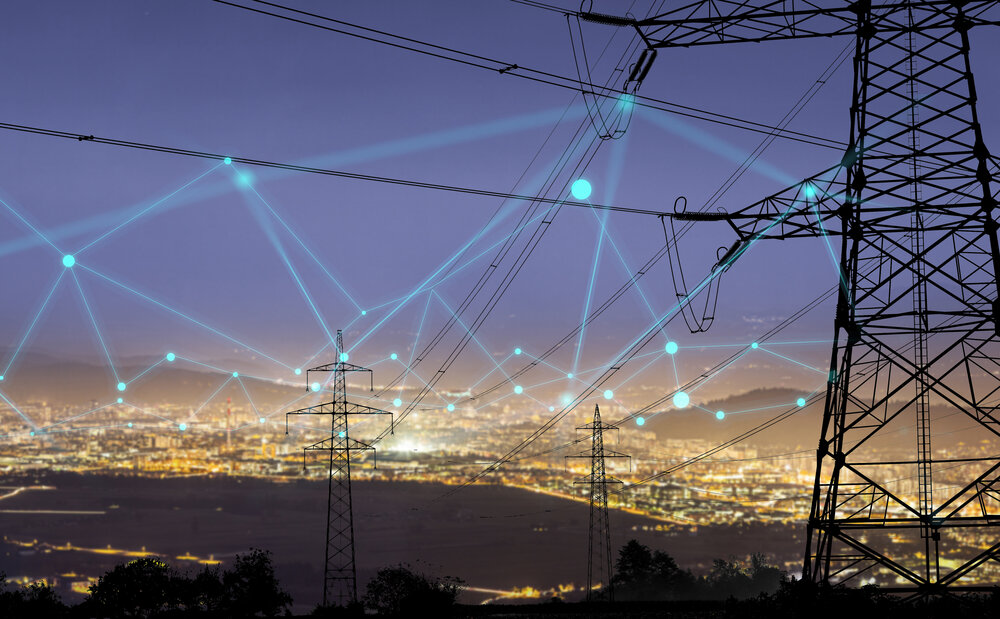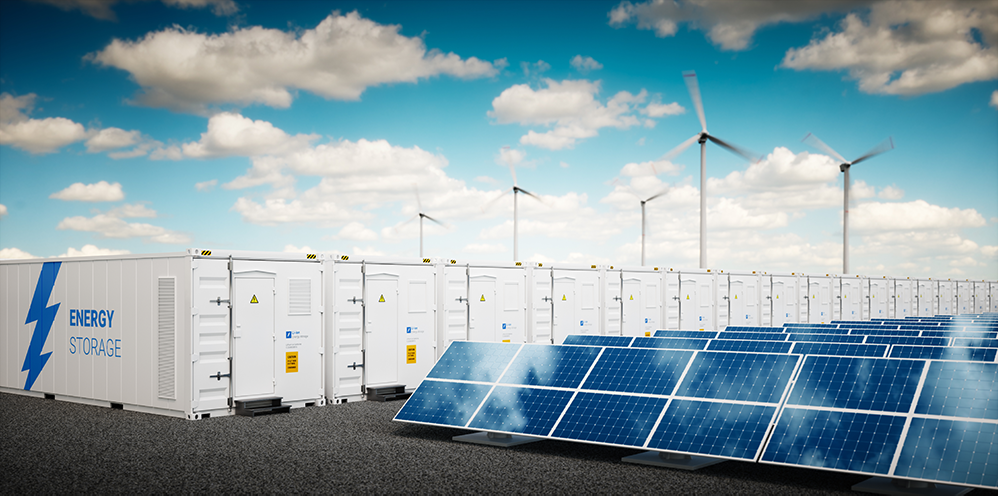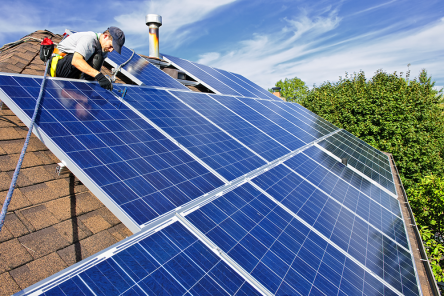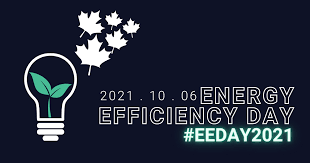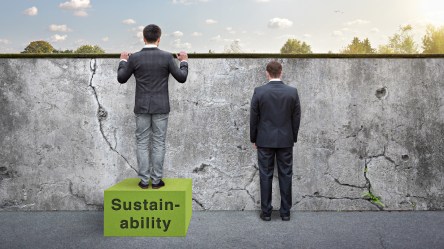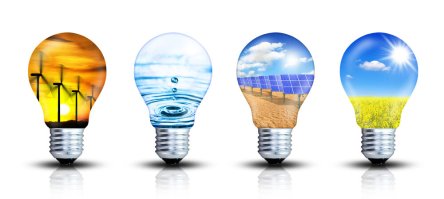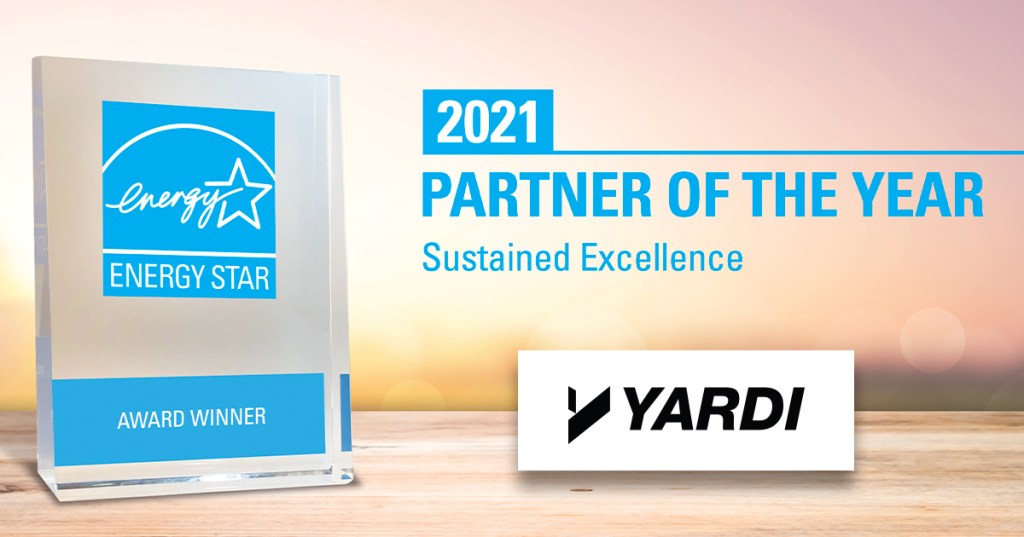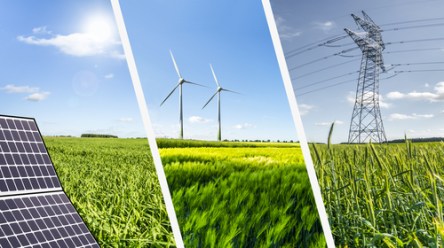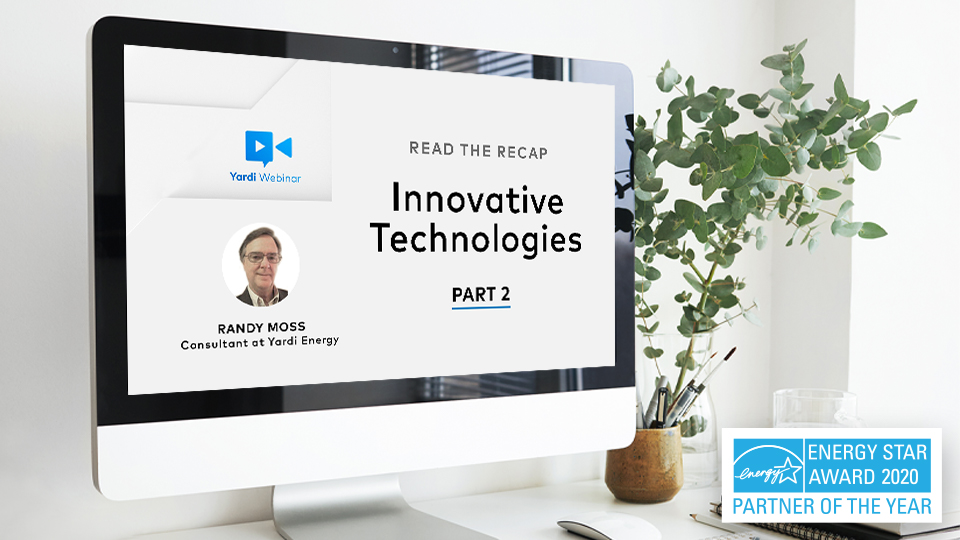Each year, the U.S. Environmental Protection Agency (EPA) honors a group of businesses and organizations that have made outstanding contributions to protecting the environment through superior energy efficiency achievements. As a Service and Product Provider, Yardi is honored to receive the 2022 ENERGY STAR® Partner of the Year Sustained Excellence Award from the EPA and the U.S. Department of Energy after being named Partner of the Year for four consecutive years. The award celebrates companies that offer energy services and products in the commercial, institutional or industrial markets for successfully assisting their clients in strategic energy management and building design. Highest EPA Accolade The Sustained Excellence award is the highest honor bestowed by the ENERGY STAR program. Its winners have made a long-term commitment to fighting climate change and protecting public health through energy efficiency. They are among the nation’s leaders in driving value for the environment, the economy and the American people. Partner of the Year winners are not only promoters of ENERGY STAR, but also are especially adept at operating within the programs and work with ENERGY STAR to make ongoing improvements. The award acknowledges Yardi’s efforts to educate and support clients with benchmarking services and technology solutions across a variety of real estate sectors. Energy wins According to the EPA, in 2020 alone, more than 270,000 commercial properties used EPA’s ENERGY STAR® Portfolio Manager® tool to measure and track their energy use, water use, and/or waste and materials. These buildings comprise more than 25 billion square feet of floorspace more than a quarter of all the commercial floorspace in the nation. In 2021, Yardi helped more than 200 clients benchmark energy in ENERGY STAR Portfolio Manager for over 5,000 buildings, a 42 percent increase from the previous year. Yardi helped clients benchmark water in over 4,000 buildings, a 33 percent increase from 2020. In addition, Yardi actively promotes ENERGY STAR benefits, publishing 70 articles and providing resources for benchmarking energy performance and energy management such as webinars, client conferences courses, executive briefings sessions and other activities. “We’re so proud to receive this top honor from the EPA for the fourth consecutive year, and we again applaud our clients’ success. We look forward to continuing to help our clients and the real estate industry reap the benefits of using ENERGY STAR to meet their business and sustainability goals,” said Akshai Rao, vice president at Yardi. Learn more Find out how Yardi empowers real estate companies to meet energy and sustainability goals. See the complete list of 2022 ENERGY STAR Partner of the Year award...
Sustainable Fashion
Changing Mindsets
When one thinks about big sustainability impacts, agriculture, energy production and other brawny industries often come to mind. But the manufacture, transport and disposal of t-shirts, pajamas, blouses and other garments create a sizeable footprint too. In fact, garment production and transportation account for up to 10% of global greenhouse gas emissions, more than the aviation and shipping sectors combined. Growing and dyeing clothing material consumes 93 billion metric tons of clean water globally each year, about half of what Americans drink annually. Scientists estimate that 35% of the microplastics in the world’s oceans, which can take hundreds of years to decompose, can be traced to textiles. Three-quarters of shirts and shoes end up burned or buried in landfills. Less than 1% of clothing is recycled into new garments and over 25% of returned items end up being thrown out. “Because it is hard to make a better performing or more efficient blouse, handbag, or pair of socks, to motivate consumption, the industry pushes change. Not better — just different, cheaper, or faster,” said Kenneth P. Pucker, former COO of footwear manufacturer Timberland, writing in Harvard Business Review in January. ‘The biggest issue’ for the industry Statistics like these are why Judith Magyar, a brand contributor to Forbes, describes sustainability as “arguably the biggest issue confronting fashion brands right now.” The industry, she says, “is waking up to the fact that decreasing its environmental impact will pay big dividends to both its constituent companies as well as society at large.” Rising environmental, social and governance scrutiny is one reason for this growing awareness. “Younger consumers value transparency, honesty and authenticity. Companies that are upfront with their products — everything from where and how they are manufactured to the materials used and the environmental impact — may...
Milestones + Deadlines...
For Local Law 97
In 2019 we reported on Local Law 97, a key element of the Climate Mobilization Act enacted in New York City in May of that year. Described by the Urban Green Council as “the most ambitious climate legislation for buildings enacted by any city in the world,” Local Law 97 aims to drastically reduce carbon emissions from buildings, which account for more than 70% of the city’s emissions. With the 2024 initial compliance milestone on the horizon, the time seems right for a recap. The ordinance imposes stringent carbon emission limits for most commercial properties over 25,000 square feet. It will impact more than 57,000 buildings and mandate reductions of 40% by 2030 and 80% by 2050 through caps, energy upgrades and retrofits. The first set of emissions caps carry stiff financial penalties for noncompliance – potentially millions of dollars in some cases. The first cap will go into effect in 2024. The city is responsible for setting new rules and regulations by the beginning of 2023. A new Office of Building Energy and Emissions Performance will clarify building categories, calculate emissions formulas before the first caps take effect and establish emissions limits for 2035-2039, 2040-2049 and beyond. The city also created a Property Assessed Clean Energy (PACE) program to help building owners finance energy retrofits and renewable energy projects, such as green roofs, solar energy systems, window insulation, upgraded HVAC systems, improvements to sealing and air ventilation. By the time the law’s tougher requirements take hold in 2030 and later, more labor- and capital-intensive upgrades will be necessary. Some easy fixes Some of the mandatory fixes are fairly easy, such as replacing incandescent light bulbs with LEDs, insulating heating pipes, covering or removing window air conditioner units in the winter, tuning and operating boilers correctly,...
Mining ESG Data
YASC Global Panel Focus
How can property owners meet the growing demand for environmental, social and governance performance accountability from residents, tenants and investors? Yardi client representatives who lead ESG reporting for their organizations and an official from GRESB, the ESG benchmark for real estate assets, recently offered some insight. Juliette Apicella, director of sustainability for Atlanta-based apartment owner and manager Gables Residential Services, was one of three industry experts who appeared on a YASC Global panel. “More investors are interested in details about our ESG policies and achievements,” she said. That prompted the company to use ESG as “a tool that helps us monitor our assets’ environmental performance as a driver of returns.” Gables has stepped up its recruitment of employees, partners and residents in the effort to incorporate environmental priorities into its operations. Another panelist, Jennifer Plesnicar, vice president for Chicago-area industrial developer and manager CenterPoint Properties Trust, sounded a similar note: “ESG is becoming more important each year” among multiple company stakeholders. “How a company responds to ESG expectations can impact operations ranging from borrowing rates to talent attraction and tenant retention,” she said. The widespread attention to ESG is “pushing the real estate industry forward,” said the third panelist, Dan Winters, head of Americas for GRESB, which collects and validates data and disseminates it to more than 150 institutional real estate investors around the world. “Getting accurate ESG data, rolling it up to the portfolio level and sharing it with the industry increases insight for a company, which appeals to its institutional investors, and also provides better outcomes for GRESB participants.” Overcoming data gathering challenges All panelists agreed that the principal challenge to managing an organization’s ESG performance is gathering, tracking and disseminating the consumption data necessary to formulate ESG actions. “A lot of...
Yardi Buildings Earn
ENERGY STAR Certification
Yardi has successfully incorporated energy efficiency at multiple locations across the property management industry – including the home front, where the company recently earned separate ENERGY STAR® certifications for two office buildings at its corporate headquarters campus in Santa Barbara, Calif. ENERGY STAR, a voluntary U.S. government program that certifies buildings and consumer products as meeting certain standards of energy efficiency, rated one building a score of 86, signifying that it’s more energy efficient than 86% of similar properties nationwide. The second building received a score of 80. The certification threshold is 75%. Yardi benchmarked the two buildings, which encompass 170,000 square feet, in Portfolio Manager®, an ENERGY STAR interactive online resource management tool that measures and compares building energy use. On average, certified buildings use 35% less energy and generate 35% fewer greenhouse gas emissions than their peers, according to ENERGY STAR, which is jointly managed by the Environmental Protection Agency and the Department of Energy. The buildings’ certifications continue a years-long series of Yardi energy efficiency achievements. For example, the company helps hundreds of clients benchmark energy and water consumption in thousands of buildings, participates annually in Energy Efficiency Day, and promotes energy optimization software in client conferences, industry publications and other educational venues. In 2021 Yardi received a Partner of the Year Sustained Excellence Award, the ENERGY STAR program’s highest honor, after earning Partner of the Year designation for three consecutive years. Also that year, the company earned a regional Energy Project of the Year award from the Assn. of Energy Engineers for helping to optimize HVAC performance in a 58-story building in New York City. Referring to the building certifications, Joe Consolo, industry principal for Yardi, said, “Yardi is pleased to meet ENERGY STAR standards in its own operations using...
Sports Arenas
Score Sustainability Points
Sports arenas attract vast attention with their aesthetic qualities, luxurious amenities, association with high-profile teams and iconic imprint on city skylines. But did you know that beyond their opulence, many modern arenas represent leadership in sustainability? “Many sports venues have jumped on the sustainability bandwagon to construct or renovate their structure in a race to minimise their carbon footprint, preserve their green legacy and take the lead in innovation,” says London-based Climate Action, which partners with business, government and public entities on sustainability projects. Sports arena sustainability is a global trend. Examples include: The Johan Cruijff ArenA (formerly Amsterdam ArenA), home of the Ajax football club. The Netherlands’ largest stadium employs more than 4,200 solar panels and a wind turbine. Its main building includes an energy-generating escalator and an energy system powered by second-life batteries from used electric vehicles.Mercedes-Benz Stadium, where the NFL’s Atlanta Falcons play their home games. In November 2017, soon after it opened, Mercedes-Benz became the first professional sports stadium to receive a platinum Leadership in Energy & Environmental Design (LEED) certificate for meeting rigid standards for carbon, energy, water, waste, materials and other factors. The arena’s energy consumption is reportedly 29% less than what the average stadium consumes thanks to LED lighting and 4,000 rooftop solar PV panels. A stormwater management system can store over 2 million gallons onsite, preventing flooding in surrounding areas.Levi’s Stadium in Santa Clara, Calif. The home of the NFL’s San Francisco 49ers since 2014 has earned two LEED certifications, including the first Gold LEED certification awarded for a stadium that hosts a professional team, plus a second Gold certification for operations and maintenance. Levi’s also incorporates 1,000 solar elements and sources 78% of its food from within 150 miles of the stadium. Seattle’s Climate Pledge...
Commercial Retrofits
A Beginner’s Guide
It’s never too late to give an existing structure a greener lease on life. Retrofits offer commercial building managers an opportunity to improve efficiency and drive cost savings. If you’re just getting started, the four retrofit methods below are a great starting point for sustainable practices. Observe, benchmark and improve your energy consumption. Monthly bills are not enough to accurately determine the efficiency of a commercial site. Retrofits connected to the internet of things (IoT) provide real-time insights into energy consumption. Explore usage based on subleased portions or the entire building. What’s best, you can implement IoT retrofits at a speed that matches your budget. Commercial managers often begin with submeters. Submetering offers insights into building performance while facilitating average savings of 2-5%. Implement supportive technology such as energy benchmarking to help you meet compliance regulations for ESG platforms like ENERGY STAR®. Promote water efficiency regardless of your location. Dry, arid regions have long prioritized end-user water conservation. Interest has grown nationwide: efficiency offers economic benefits to all managers regardless of the site’s location. Retrofits for cooling towers and chillers are a great place to implement efficiency measures. Such retrofits will have the most notable impact since they can consume tens of thousands of gallons each day. Smaller projects, such as fixtures, may follow. Streamline HVAC operations to reduce waste and increase comfort. The efficiencies of HVAC systems decline naturally over time. Promoting optimal operation and occupant comfort requires consistent maintenance and smart controls. Networked controllers and cloud-based management software enable you to monitor and manage usage. Smart thermostats and monitoring technology can offer up to 30% energy savings while slashing future maintenance costs. Improve indoor air quality (IAQ). Americans spend about 90% of their time inside. Indoor air contains a higher concentration of...
22 Energy Outlook
Favors Renewables
Global energy demand surpassed pre-COVID 19 levels in 2021. Energy was the top-performing S&P 500 sector that year. With energy demand still on the rise, the energy sector stands to grow even more in 2022. The Balance Sheet sampled expert predictions of what’s ahead for renewables and the rest of the energy industry in 2022. We will keep tabs on key developments throughout the year. Economist Intelligence, a policy analysis and consulting group, predicts that global energy consumption will rise by 2.2% in 2022 as economies recover from the pandemic. All types of energy except nuclear power will benefit, although “energy companies will need to undertake an urgent review of their strategies next year, as governments and investors ramp up pressure to cut emissions.” Kathryn Downey Miller, president of energy industry analysis firm BTU Analytics, echoes that assessment. “Despite a strong profit outlook heading into 2022, enormous pressure is coming from providers of capital and other stakeholders to evolve business models for the new energy economy,” she said in an editorial published in December. That pressure is a principal reason that “renewable energy growth is poised to accelerate in 2022, as concern for climate change and support for environmental, sustainability, and governance considerations grow and demand for cleaner energy sources from most market segments (residential, commercial, and industrial consumers) accelerates,” according to an energy industry outlook report prepared by Deloitte. Renewable generation expands Renewables were the only energy source for which demand increased in 2020, according to the International Energy Agency. Renewable electricity generation in 2021 expanded by over 8% in 2021. Record levels of wind and solar generation additions are expected to come online in 2022, according to S&P Global Market Intelligence, which studies energy markets. The adoption of renewable energy sources will be...
New Energy Regulations
Queued Up for 2022
A raft of new and updated energy-related regulations across the U.S. will go on the books this year. Complying with them requires property managers to use specialized platforms capable of collecting utility billing data for an entire building and reporting it to ENERGY STAR® Portfolio Manager®, which tracks energy and water consumption and compares it to similar buildings. New energy benchmarking and reporting laws are constantly being enacted in jurisdictions across the country. The Yardi Energy team monitors those changes to help clients seamlessly comply. Examples of new regulations that Yardi will help clients comply with include: An ordinance in Chula Vista, Calif., requiring annual ENERGY STAR® energy and water consumption benchmarking, with 2021 data due by March 20. The requirement covers residential and commercial properties with gross floor areas of at least 50,000 square feet and includes reporting of utilities paid by tenants. In 2023 the reporting threshold will decrease to 20,000 square feet.A Colorado state-wide regulation that requires owners of commercial and residential properties at least 50,000 square feet to report all energy and water use in their buildings, including utilities paid by tenants. The regulation also levies a $100 benchmarking fee for each building. Regulation updates that go into force this year include: A lower threshold for annual energy and water reporting in Fort Collins, Colo., from 10,000 square feet for commercial buildings and 20,000 square feet for residential buildings to 5,000 square feet for both.Similar threshold reductions in Reno, Nev., from 50,000 square feet to 30,000 square feet; and Columbus, Ohio, from 100,000 square feet to 50,000 square feet.A suspension of the Commercial Building Energy Reporting ordinance in Portland, Ore., to April 2023. Residential buildings are already exempt. Other reporting requirements impact properties in Canada. For example, while the Energy and Water Reporting and Benchmarking regulation in Ontario will remain unchanged in 2022, the reporting threshold will decrease to 50,000 square feet from 100,00 square feet in 2023 for reporting data collected in 2022. Learn how Yardi benchmarking services help property owners across all real estate markets use ENERGY STAR Portfolio Manager to comply with a rapidly shifting regulatory...
Climate Protection Partnerships...
EPA Program Spans 3 Decades
It started with Green Lights. That was the U.S. Environmental Protection Agency’s (EPA’s) inaugural Climate Partnerships Programs initiative in 1991. Since then, Climate Partnership Programs has engaged tens of thousands of public and private organizations, generated billions of dollars of investments in energy efficiency and clean energy, saved American consumers more than $500 billion in energy costs and prevented more than 6 billion metric tons of greenhouse gas emissions. Green Lights – which encourages organizations to use energy-efficient lighting technologies in their offices, factories, stores and warehouses – is one of more than two dozen Climate Partnership Programs. Vital to meeting national greenhouse gas reduction, carbon-pollution free electricity and net-zero emissions targets, the programs include: ENERGY STAR®, which identifies energy-efficient products and practices for consumers and businesses in 33 industrial sectors and 840 utilities. Since 1992, ENERGY STAR, managed jointly by the EPA and the U.S. Department of Energy, and its partners have helped American families and businesses save 5 trillion kilowatt-hours of electricity, avoid more than $450 billion in energy costs and achieve 4 billion metric tons of greenhouse gas reductions. In 2019 alone, ENERGY STAR drove reductions of 220,000 short tons of sulfur dioxide, 220,000 short tons of nitrogen oxides, and 27,000 short tons of fine particulate matter. ENERGY STAR product sales exceed $100 billion annually.The State and Local Climate and Energy Program, which offers free tools, data and technical expertise to help state, local and tribal governments achieve their environmental, energy, equity and economic objectives.The Green Power Partnership, a source of information and technical assistance for companies using green power. The program has helped prevent nearly 280 metric tons of greenhouse gas emissions.Methane Emissions Reduction Partnership Programs, which promote the cost-effective recovery and use of methane by sectors such as agriculture,...
Energy News Updates
From the Dept. of Energy
We last summarized news and trends produced by the Energy Information Administration in April. Here’s some of what’s new from the EIA, a statistical and analytical agency of the U.S. Department of Energy that collects, analyzes and disseminates energy information. Commercial buildings grow larger and more energy-conscious Commercial buildings in the U.S. are getting larger and more oriented toward energy efficiency, according to data from 2018 released in September. The number of commercial buildings grew 6% from 2012 to 2018 while total floorspace increased by 11%. Commercial assets more commonly include features such as LED lighting, which is used in more than 2.5 million commercial buildings, and electric vehicle charging stations, which are available at more than one-third of buildings over 500,000 square feet. Renewable energy share grows Renewable energy is expected to account for 23% of U.S. electricity generation through 2022, up from 20% in 2020. About 50 gigawatts of solar and wind capacity is scheduled to come online nationwide during that period, with 2022 as the first year that growth in utility solar capacity will outpace wind capacity growth. Retail sales of electricity to the U.S. industrial sector will increase by 5.1% in 2021, a major element of the overall increase of 2.8%. Electricity sales will be somewhat lower (2.1%) in the commercial sector as many workers continue working from home. Batteries amp up U.S. battery power capacity grew by 35% in 2020 and tripled over the preceding five years, with much of the growth coming from energy systems co-located with or connected to solar projects. EIA projects that battery power growth will continue, with utilities reporting plans to install more than 10,000 megawatts of additional large-scale battery power capacity from 2021 to 2023. “Energy stored in batteries can react to second-to-second fluctuations in the electric grid, protecting grid power quality and improving the grid’s efficiency,” said EIA Acting Administrator Steve Nalley. “Battery systems can help store electricity generated from solar or other renewables so that electricity is available at times when demand is peaking, but generation from renewables is lower.” Natural gas price volatility looms Concerns about winter weather are contributing to volatile natural gas prices. “Mild weather has limited natural gas consumption and helped bring our storage levels closer to average in recent weeks, but cold winter weather could continue to put upward pressure on prices,” Nalley said in November. “Winter temperatures will be the key driver of natural gas demand, inventories, and ultimately prices.” Despite relatively high natural gas prices, the U.S. electric power sector continues to use significant amounts of natural gas for generation, with exports of liquefied natural gas in October 2021 rising 37% above the October 2020 level. Stay tuned for more EIA updates in 2022. Meantime, learn how Yardi software solutions help residential and commercial property owners manage their energy consumption efficiently and meet ENERGY...
Energy Innovation
ARPA-E Projects Update
The Advanced Research Projects Agency-Energy, which performs R&D for the U.S Department of Energy, sponsors initiatives by businesses and academic institutions to improve energy efficiency. Here’s the latest of our periodic summaries of active ARPA-E projects. Creating a new version of wood Alternative materials creator InventWood of College Park, Md., is working to develop lightweight 3D corrugated honeycomb structures to replace metal counterparts. 3D wood has one-third the density and one-fourteenth the cost of aluminum with the same mechanical strength. And the proposal could produce a big sustainability benefit as well – a 90% reduction of CO2 emissions in the manufacturing process. Adding the human touch to energy savings About 75% of U.S. homes have smart meters, according to Smart Energy International. While giving homeowners greater access to their energy-use data is a positive step, a team Stanford University researchers believes that optimizing energy and cost savings with that information will “require an understanding of human behavior.” Using human behavior to optimize energy and cost savings could “transform the way Americans interact with our energy-use data,” the team says. A custom-built web-based platform collects historical electricity data for experiments to learn what triggers homeowners to respond. The experiments include financial incentives and a calculator that illustrates the potential savings of efficient appliances. Once completed, the platform and new behavior experiments could help homeowners save energy, improve their energy efficiency and reduce utility bills. Making the power grid cleaner ARPA-E is funding four projects to develop technology to remove sulfur hexafluoride, a gas that’s utilized as an electrical insulator and arc suppressant, from the U.S. power grid. It’s a more potent greenhouse gas than carbon dioxide. Proposals from the funding recipients – the University of Connecticut, Georgia Tech, GE Grid Solutions of Charleroi, Pa., and...
Simplify Your Job
Easy ENERGY STAR Benchmarking
Have you been navigating ENERGY STAR® Portfolio Manager on your own? There is a better way. Get to know the ENERGY STAR Benchmarking Team for simplified and improved reporting. Meet your ENERGY STAR reporting experts ENERGY STAR Benchmarking Team is located in the Yardi Atlanta and Colorado Springs offices to conveniently serve clients in different time zones. Yardi’s ENERGY STAR team consists of eight experts in all aspects of ENERGY STAR reporting and the many systems that these reports feed. The department is annually recognized as an ENERGY STAR Partner of the Year and received the Sustained Excellence Award in 2021. The team supports client use of ENERGY STAR Portfolio Manager, a U.S. Environmental Protection Agency system. The team assists with regulatory compliance, finance and sustainability reporting requirements. They collaborate with clients to setup and maintain portfolios of properties in Portfolio Manager. This includes syncing data from ENERGY STAR with reporting systems designated for each property. The existence of the department embodies part of the Yardi mission statement, “take care of our clients.” Randy Moss, senior team leader, CSD, has been with Yardi for nine years. He joined Yardi as part of a larger acquisition but has continued on due to company culture. “Yardi is a great place to work and encourages everyone to seek ways to better take care of our clients,” says Moss. “ENERGY STAR Benchmarking started as a client request and today serves over 4,000 properties for Yardi clients. It is very rewarding to support our clients using ENERGY STAR for reporting to all the different systems needed.” Wait, Yardi offers support for ENERGY STAR Portfolio Manager? Yep! The team works synergistically with other departments within Yardi to support clients’ reporting needs. The team works with utilities, industry groups and regulators...
Energy Efficiency Day...
Shines Again
On Oct. 6, Energy Efficiency Day addressed a topic with vast local, regional, national and global implications throughout the year. Yardi was pleased to observe the event with more than 800 local governments, universities, organizations, corporations and utilities. This year’s event coincided with the 30th anniversary of the U.S. Environmental Protection Agency’s (EPA’s) climate partnerships program, a collaboration between private and government organizations that has prevented more than 6 billion metrics tons of greenhouse gas emissions – more than all U.S. carbon dioxide emissions in 2019. “Energy efficiency is the cheapest, quickest way to meet our energy needs, cut consumer bills and reduce pollution. Energy efficiency is also an economic engine, supporting over two million jobs nationwide in manufacturing, construction and other fields,” according to the Energy Efficiency Day organization’s website. Energy Efficiency Day, an early-October fixture since 2016, promotes awareness by encouraging home and business energy audits, energy-saving competitions, success story sharing using the #EEDay2021 hashtag and more. Participants seek to promote easy-to-implement measures for businesses and individuals, including: Scheduling regular inspections for refrigeration equipment, furnaces, heat pumps and other equipment.Turning on computers, monitors, printers and fax machines only when they’re needed.Locating and sealing air leaks around the house. Even hidden drafts can hurt your energy efficiency.Staying cool in school. Did you know that the average 200-square-foot dorm room can generate as much greenhouse gas pollution as the tailpipe emissions of a car driven more than 2,000 miles? Consider setting rooms with individual temperature control a few degrees higher to reduce the cooling system’s energy use.Purchasing home appliances carrying the ENERGY STAR® label, which certifies adherence to strict EPA energy-efficiency standards.Turning off lights when leaving the room and consider swapping regular light bulbs for LEDs.Running ceiling fans clockwise and at low speeds during...
Energy Efficiency
State-by-State Comparison
Are energy efficient features the norm or the exception in your state? How can that impact your property performance and marketing? We’ve got the inside scoop for you as we dive into the latest report on energy efficiency by state. WalletHub report offers insights into energy efficiency by state Personal finance company WalletHub released a report that gathered and analyzed data from government agencies in the continental U.S. Researchers considered data on automobile and building efficiency. States were then ranked in those categories, as well as overall efficiency. Operating within a high-efficiency state has its benefits. The report concludes that household and community-level increases in energy efficiency “decrease long-term costs for everyone.” Increased efficiency translates into energy savings and more resilient buildings and cars as well. Best and Worst Overall Utah ranked #1 in overall energy efficiency, receiving a score of 83.91 points out of 100. New York was hot on its tail with 82.05 followed by Massachusetts and Minnesota. Rhode Island wraps up the top five most efficient states with 76.45 points. The south is home to the least energy efficient states, with South Carolina leading the pack with a 21.49. With increasing efficiency comes West Virginia with a 24.20 proceeded by Alabama, Tennessee, and Louisiana at 31.22. Best and worst housing efficiency Among residential properties, Utah re-appears on the list as most efficient at 83.91. This time, it is trailed by Minnesota, New York, Colorado and Vermont. South Carolina also reappeared on this list as the worst in-home energy efficiency. Alabama, Tennessee, Louisiana and Georgia were also nestled at the bottom of the list as well. While local incentives impact efficiency measures during development and construction, there are other ways to promote efficiency. Building operators can improve building efficiency through ENERGY...
Control Costs
With Strategic Energy Management
The residential real estate sector is going to see a few changes in the near future as businesses continue to open up their office environments, travel and immigration resume to pre-pandemic levels and Canadians gain a sense of confidence in venturing out of their homes on a more regular basis. Though human interactions will see a subtle shift from the pre-pandemic era, how residents use their living spaces will continue to evolve. This is an opportunity for real estate companies to re-evaluate the ways in which they manage their properties. Regardless of their approach to marketing, resident relations and other operations – the value of a viable energy strategy is gaining importance in the Canadian real estate sector. Residential property owners can increase asset values, boost stakeholder satisfaction and ensure compliance by adopting smart energy consumption practices. That’s best done strategically, especially as costs remain under heavy scrutiny and ESG accountability assumes ever-greater importance. First step: Utilize utility data to minimize costs Understanding and documenting energy consumption across a portfolio should be the first step in building a value-add energy strategy. Why? Because this operational area is one of a property’s largest controllable operating expenses. Understanding and harnessing utility data can make a property more valuable, more likely to retain residents, more easily marketed for sale, more compliant and more attractive to prospective tenants and investors and less likely to require concessions to rent. Advanced automated utility expense management systems also reduce duplicate payments, late fees, system interface errors and inaccurate spend measurements. They replace the cumbersome process of tracking consumption in excel, and wading through stacks of paper utility bills with digital invoice transmission and automated usage validation. Along with creating a single solution for invoice tracking, payments, budgeting and reporting, these systems...
Energy Innovators
Earn Awards Spotlight
Even as pandemic-driven lockdowns and stay-at-home mandates curtailed energy consumption in 2020, organizations in all types of industries remained focused on impactful conservation initiatives. Here’s a look at some of the companies that joined Yardi in receiving a 2021 ENERGY STAR® Partner of the Year Sustained Excellence Award, the highest honor bestowed by the U.S. Environmental Protection Agency and the U.S. Department of Energy for initiatives that reduce energy consumption and mitigate climate change. BENTALLGREENOAK. Along with achieving ENERGY STAR certification for 81 properties, the Seattle-based global real estate investor continued benchmarking its assets’ sustainability performance against internal best practices and peers. BentallGreenOak also used ENERGY STAR metrics to measure the success of its energy efficiency strategies. FOOD LION INC. The Salisbury, N.C.-based retail grocery store chain expanded its LED lighting retrofit program to 32 stores, saving more than 9.2 billion BTUs annually. It also earned ENERGY STAR certification for 919 stores, which encompass 89% of its portfolio. HEXION INC. The Columbus, Ohio, producer of thermosetting resins, coatings, adhesives and specialty resins executed 52 energy projects that produced $2 million in savings. It also conducted treasure hunts at 23 sites that identified 131 potential projects. The Columbus, Ohio, company’s energy management program has reduced energy intensity by 28% and saved $14 million in costs since 2014. INTERTAPE POLYMERGROUP INC. The Sarasota, Fla., manufacturer of paper and packaging products achieved a 6.8% reduction in energy intensity over 2019, part of energy savings equivalent to $6.4 million since 2009. The company also participated in several ENERGY STAR certification, Challenge for Industry and Find the Treasure activities. MERCK & CO. INC. The pharmaceutical and healthcare company issued a letter of intent to purchase 60 MW of solar energy, matching the amount purchased in 2019. The Kenilworth, N.J.-based...
New Student Housing Standards
For construction and energy
Experiences shape our approach to built spaces. In 1992, Hurricane Andrew irreversibly changed building codes in Gulf states. About 20 years later, Hurricane Sandy prompted code and regulation shifts in New York and mid-Atlantic states. While natural disasters are often the catalysts, the pandemic has made its own mark upon built environments. Student housing experts weigh in on the pandemic-inspired trends that are here to stay. They earn their staying power as they increase convenience, improve functionality and appeal to student demands. Modular construction expedites projects, appeals to students Labor shortage, shelter-in-place mandates and leaps in material costs are just a few causes for delayed project completions in 2020. Projects lag even as campus life returns to normal. Stick-built construction may prove too costly and time consuming to meet projected timelines for future projects. Experts believe modular design will become more mainstream in student housing. “While upfront material costs may be similar to stick-built construction, modular can result in significant time savings, allowing developers to catch up on projects that might have been delayed and deliver new projects faster. This is especially beneficial in markets with high labor costs,” says Kelly Naylor, director of interior design and senior partner at BKV Group. Additionally, modular design places sustainability at the forefront of building. Building construction and operation contribute to roughly 33% of global energy consumption and 39% of greenhouse gas emissions, notes Naylor. Modular construction and light steel framing can reduce a carbon footprint by 20%. Student populations vastly support sustainability measures, and green housing will be well received. Improved ventilation makes a comeback Whether conventional or modular construction, air quality has resurfaced as a top priority.In past decades, an emphasis on tighter building envelopes encouraged greater energy efficiency at the expense of natural ventilation practices. A new program by the U.S. Environmental Protection Agency (EPA) combines the efficiency of ENERGY STAR® with improved air quality through Indoor airPLUS for residential properties. Additional building standards also support improved air quality. HVAC systems containing filters with Minimum Efficiency Reporting Value (MERV) ratings of 13 or higher are among best practices, per the American Society of Heating, Refrigerating and Air-Conditioning Engineers (ASHRAE). To maintain optimal ventilation, the organization recommends the use of CO2 sensors that trigger ventilation purge cycles. Maintaining a higher standard of clean becomes a line item To no one’s surprise, heightened cleanliness standards will remain a priority for the foreseeable future. To promote resident and staff health, student housing providers are implementing hospital-grade electrostatic sprayers to sanitize public surfaces, reports Justin Wybenga, vice president of asset services at GMH Capital Partners. The cleanest surface, of course, is one that no one has to touch. “Many residents are also looking for convenient contactless or concierge-focused amenities,” says Wybenga. “Prior to the pandemic, owners were installing package locker systems and refurbishing buildings with keyless entries, but they have been making significant investments to upgrade amenities with new efficient software like Bluetooth entry for package lockers that has become expected and the norm.” Shared spaces must share the spotlight… Before the pandemic, shared spaces were a staple in new construction. They will continue to be a part of design but play a significantly smaller role, projects Naylor. “For many, studying within their residence or building, rather than on-campus, translated to improved productivity, which they will still want coming out of the pandemic. As designers, we want to facilitate these behaviors by creating spaces within residences and throughout the building where students can focus on academics while feeling connected to the greater community,” she says. Research on the impact of COVID-19 on higher education students that was shared by the University of Nevada concurs. During the pandemic, a higher number of students craved quiet places to study and designated desks. Without access to those resources, they reported “below average satisfaction” with their school and experience. …when students want to share at all Wybenga and his...
Energy Bulletins
From U.S. DOE
The following information is courtesy of the Energy Information Administration, a statistical and analytical agency of the U.S. Department of Energy that collects, analyzes and disseminates energy information. Post-COVID consumption lags The U.S. will likely take at least a decade to return to 2019 levels of energy consumption and carbon dioxide emissions due to the impact of COVID-19 on the economy and global energy sectors. “The pandemic triggered a historic energy demand shock that led to lower greenhouse gas emissions, decreases in energy production, and sometimes volatile commodity prices in 2020,” says Stephen Nalley, the EIA’s acting administrator. Around the world, global demand for petroleum products in 2020 fell by 9% from the previous year. Just how long it will take production and consumption levels to return to their pre-pandemic levels depends on a range of factors including the pace of economic recovery, advances in technology and government incentives. “It will take a while for the energy sector to get to its new ‘normal,’” according to Nalley. Battery power charging up A significant number of battery energy storage systems will be added in the U.S. between now and 2050, at which time 59 gigawatts (GW) of battery storage will serve the power grid. Falling battery costs, growth in non-dispatchable renewables (such as solar and wind, which can’t be turned on or off at will) and tax credits are the key drivers of the capacity expansion. Wind becomes a force In 2019 and 2020, developers in the U.S. installed more wind power capacity than any other generating technology. Wind turbine capacity additions in 2020 totaled 14.2 GW, surpassing a record that had stood since 2012. The impending phasing out of the full value of the production tax credit spurred investments in this technology. Congress extended...
ARPA-E Projects
Push Energy Progress
Buildings account for 72% of the United States’ electricity use and 40% of the country’s carbon dioxide emissions each year. The Advanced Research Projects Agency-Energy, which carries out R&D for the U.S Department of Energy, sponsors initiatives by businesses and academic institutions to improve buildings’ energy efficiency. Here’s a summary of some active ARPA-E projects. Promoting a healthy cold According to ARPA-E, 5% of CO2 emissions come directly from air conditioning, which uses refrigerants that are greenhouse gases. American Superconductor of Ayer, Mass., is developing a freezer that doesn’t rely on harmful refrigerants and would operate more energy-efficiently than conventional systems. American Superconductor proposes to use helium gas as the cooler’s refrigerant, superseding liquid refrigerants that are eventually pumped out to the external environment. The eventual goal is the cost-effective mass production of high-efficiency freezers that do their job without pollution-generating refrigerants. Efficiency in motion A team at Boston University is developing an occupancy sensing system designed to estimate the number of people in commercial spaces and monitor how that number changes over time. The proposed system would generate occupancy estimates using advanced detection algorithms that interpret data streams from sensors and cameras. The occupancy data would enable the building control system to manage the heating, cooling and air flow to maximize building energy efficiency and optimize comfort. This could go a long way in making Boston office space, indeed office space across the world, more efficient. The project could “dramatically reduce the amount of energy needed to effectively heat, cool and ventilate buildings without sacrificing occupant comfort,” ARPA-E says. New pane, new gain Single-pane windows that are present in many buildings don’t insulate as well as double-pane units. Unfortunately, replacing them with newer, more efficient windows isn’t always feasible because of costs, changes...
Shine On
Yardi Awarded Highest EPA Honor
The U.S. Environmental Protection Agency (EPA) and the U.S. Department of Energy (DOE) have honored ENERGY STAR® partners from 39 states for outstanding leadership in reducing energy bills and tackling climate change. This year, Yardi has received the highest honor — the 2021 ENERGY STAR Partner of the Year Sustained Excellence Award. For the third consecutive year, Yardi has excelled as an ENERGY STAR Partner of the Year in its ongoing commitment to help educate and support its clients through energy management software with a built-in dashboard for ENERGY STAR scores and benchmarking using ENERGY STAR® Portfolio Manager®. Ongoing Excellence “ENERGY STAR award-winning partners are showing the world that delivering real climate solutions makes good business sense and promotes job growth,” said Michael S. Regan, EPA administrator. “Many of them have been doing it for years, inspiring all of us who are committed to tackling the climate crisis and leading the way to a clean energy economy.” The 2021 ENERGY STAR Sustained Excellence Award acknowledges Yardi’s technology solutions and ongoing philanthropic efforts across a variety of real estate sectors including: Helping more than 140 clients benchmark energy in over 3,500 buildings Benchmarking water in over 3,000 buildings Promoting the importance of ENERGY STAR scores to clients through education, training and visibility Including ENERGY STAR in Yardi’s energy management software dashboard Publishing more than 32 articles on the benefits of benchmarking, energy management and other conservation topics Providing digital courses for over 36,000 attendees from more than 58 countries during its virtual user conferences Again earning ENERGY STAR certification for its Southern California corporate headquarters Akshai Rao, vice president at Yardi, sees the award as a reflection of the company’s clients and their impressive achievements in energy management and conservation. “We’re proud of our clients’ achievements using ENERGY STAR resources to meet their business and sustainability goals. Our benchmarking increased by more than 50% over last year. This is due in part to rapid adoption of ENERGY STAR benchmarking to better understand remote work environment impacts on building energy use during the COVID-19 pandemic. We look forward to helping our clients and the industry gain even more ENERGY STAR benefits moving forward,” said Rao. Your Turn to Shine For a complete list of 2021 winners and more information about ENERGY STAR’s awards program, visit energystar.gov/awardwinners. To learn more about getting support for your company’s energy management and sustainability goals, join a free energy management...
Energy Updates
Wind, Solar & More
Here’s a roundup of recent reports from the Energy Information Administration, the statistical and analytical agency within the U.S. Department of Energy: Wind power flies high in 2020 Project developers expect more than 23 gigawatts of wind turbine generating capacity to come online in the U.S. in 2020, far more than the previous record of 13.2 GW added in 2012. The impending phase-out of the full value of the U.S. production tax credit at year’s end is leading to more capacity additions than average this year, just as previous tax credit reductions led to significant wind capacity additions in 2012 and 2019. Texas has the most wind turbine capacity among states, with 29.1 GW installed as of August 2020 and another 4 GW expected by the end of the year. Wind’s share of U.S. electricity generation increasing from 7.4% in 2019 to 8.8% in 2020 — more than any other renewable electricity generation source. That share is expected to reach 10.3% in 2021. CO2 emissions reach lows In 2020, carbon dioxide emissions from the U.S. energy sector could be 11% lower than in 2019, according to data collected through August and estimates through December. CO2 emissions are expected to fall by 19% for coal, by 13% for petroleum and by 2% for natural gas. Many of this year’s changes in energy-related CO2 emissions are attributable to COVID-19, including working from home, stay-at-home mandates, closed or limited operating hours for several types of businesses and travel restrictions. In April, monthly U.S. energy consumption fell to a 30-year low and emissions reached a record low. Winter bills holding steady U.S. households that primarily use natural gas or electricity will have slightly higher energy expenditures this winter, with households using propane spending 14% more and those relying...
ENERGY STAR Talks Tech
Webinar Recap
Utilities are the second highest controllable expense for property owners, so measuring and managing consumption is critical to control costs and minimize waste. The EPA’s ENERGY STAR® Partner of the Year Award Winner Webinar Series session on October 8 focused on innovative technologies (Innovative Technologies Part 2) for achieving energy efficiency. ENERGY STAR’s Stacy Glatting was joined by Dan Egan, senior vice president of energy and sustainability for Vornado Realty Trust and Randy Moss, ENERGY STAR benchmarking team lead at Yardi. Egan and Moss shared compelling data about energy costs and talked about tech that makes significant savings possible for real estate operators. The big picture Forward-thinking commercial building operators are implementing a variety of innovative technologies for energy management. Egan shared how Vornado has piloted induction unit valves at its buildings. Moss discussed how Yardi clients have achieved cost savings and maximized performance using a smart software platform that includes artificial intelligence to manage sophisticated building controls. Data analysis from Yardi — incorporating wasted consumption estimates from ENERGY STAR — shows that after MRO, utilities are the second highest expense for real estate firms, and they are controllable with the right solutions. Consider these statistics: Estimated annual spend across controllable expense buckets for 1M sq ft in a portfolio is around $1,980,000 The average commercial building is estimated to waste 30% of its consumption Potential savings equal $600k annually for every 1M sq ft in a portfolio “It’s a data-driven proposition for energy efficiency. We must not only evaluate energy consumption for our buildings, but also more granularly understand tenant consumption and landlord/base building consumption to identify drivers of efficiency,” explained Egan. He noted that the regulatory environment in New York City and the entire state compels companies to consider utility data sources such as the carbon intensity of the grid, hourly pricing (and carbon) signals and future transmission planning when evaluating different energy efficiency projects. “ENERGY STAR® Portfolio Manager® and ENERGY STAR® Tenant Space™ provide frameworks to obtain and monitor these types of data,” added Egan. ENERGY STAR Tenant Space is a new EPA recognition for sustainability in leased office spaces. Vornado Realty Trust’s energy goals Vornado is the largest owner of LEED-certified property in the U.S. and is a member of the Climate Group EP 100. According to Egan, Vornado’s “Vision 2030 Roadmap” includes a total energy reduction goal of 50% with same-store portfolio. In 2019, the company reported progress toward that goal with a 24% reduction in energy use. “Energy efficiency goals must be a tenant partnership,” said Egan. Considering the company reported about 60% of electricity costs are recovered via tenant submeter, that’s no understatement. Egan offered these takeaways after discussing the company’s approach to energy management: Innovative technologies are sometimes tried-and-true solutions that are repackaged with automation and informed by good data to support their value One must understand energy data at different points of the supply chain (from source to end use) to understand the value streams to add to the solution stack Energy efficiency and GHG emissions reductions are often correlated but not always, and rarely linearly Regulation and market signals will drive efficiency further and shift the focus towards electrification Yardi Pulse for energy management Yardi’s Moss talked about managing energy and achieving sustainability using connected and responsive technology. For a complete energy management strategy across your portfolio, you must automate utility invoicing with the ability to mine and validate invoice data, benchmark sustainability, get real-time meter insights and detect system faults as they occur through constant monitoring. With regard to best practices, an energy management system built into your property management platform to combine all your operational data will deliver the best results. Yardi Pulse enables commercial real estate operators to manage energy intelligence and automate energy equipment to lower costs, reduce consumption, keep tenants comfortable and improve efficiency from one connected platform. Plus, Yardi Pulse loads data into...
Did COVID-19 Spark
A Renewables Renaissance?
Some industries, such as technology and online media, are doing well amid COVID-19, even as the pandemic cuts a swath through virtually every public health, political, social and economic structure. Other segments of the economy, such as travel and hospitality, face a perilous future. And what about the vital energy sector? Before the pandemic hit, energy demand was projected to grow 12% between 2019 and 2030, as developing nations broadened their power generation capacities. But COVID-19 “has brought the generation of energy from fossil fuels to breaking point,” says the World Economic Forum, with global energy demand declining by 5% in 2020. Despite a larger population and world economy, demand in 2050 will be about the same as it is today, according to risk management and quality assurance experts DNV GL, due partly to the effects of COVID-19. “The scale of the fall in demand, the speed of change, and how widespread it has been have generated a radical shift that seems to be more than a temporary short-term drop in demand for fossil fuels, at least in the power sector,” Nelson Mojarro, a World Economic Forum advisor, said in June. That development has opened the door for renewable energy generation to play an even more prominent role on the world energy scene. Renewables, including solar, whose cost has fallen by 82% over a decade, are the lowest-cost source of new power generation, according to the International Renewable Energy Agency. That trend is expected to hold over the foreseeable future. And COVID-19, Mojarro says, “has had a game-changing effect in accelerating the clean energy transition in the power sector.” Within 10 weeks of the start of widespread lockdowns, according to data compiled by the International Energy Agency, the U.S. increased its renewable energy consumption...
New ENERGY STAR report
Renewable Energy Usage Up
An ongoing series of research reports from the U.S. Environmental Protection Agency (EPA) details information from the hundreds of thousands of buildings who use ENERGY STAR® Portfolio Manager to track energy usage. The latest report focuses on renewable energy and trends in energy metering and efficiency tracking. Onsite renewable energy systems The report studies data from over 260,000 properties, determining that less than 1% (2,447 properties) are currently generating onsite renewable energy. However, even with this low total, the use of onsite renewables has increased ten-fold in the last decade. Among the most common property types who do generate renewable energy are retail stores, K-12 schools and offices. Schools and worship facilities account for the largest number as a percentage of their total properties, still only representing 2.4% each. By comparison, only half a percent of multifamily housing properties have implemented renewable systems. Where are these systems most commonly found? According to the study, California leads the way by a wide margin with nearly 1,000 properties. That number represents more than the next 10 highest states combined. Because the source energy conversion factor is lower for onsite renewable energy, these properties have higher ENERGY STAR scores by a significant margin compared to all properties (74 to 59). Data also shows that 55% of these buildings meet less than a quarter of their electrical consumption from onsite renewables. Metering challenges and considerations There are three primary types of meters that customers use, determined by local utility company standards and building electrical systems. The report dives into the types of meters, what information they do or do not provide and how this impacts energy benchmarking and efficiency goals. Net meters spin forward or backward showing net consumption of power, but do not tell you what was imported or exported. Bi-directional meters tell you how much energy was imported and how much renewable energy was exported. The least common, dual meters have two devices, one to measure import and another for export. The main billing issue, as described in the study, is that only reporting net consumption makes it challenging to benchmark energy performance. To assess this accurately, you need all energy use, regardless of source. Portfolio Manager accurately incorporates onsite renewables into efficiency calculations. Developers may be willing to retrofit older meters with newer versions in order to capture renewable energy generated onsite exported back to the grid and the amount of grid energy sent to the building. The report goes into further detail about renewable energy certificates, inaccurate billing and metering practices, and thoroughly explains the flow chart connecting energy, meter and property. While the total number of buildings reporting onsite renewable energy continues to grow, it still represents a fraction of total properties. Data will become more available to customers as more meters support accurate measurement of onsite renewable energy. Until then, it’s hard to paint a detailed picture of efficiency and even harder to invest in a mix of strategies to achieve great energy use...

